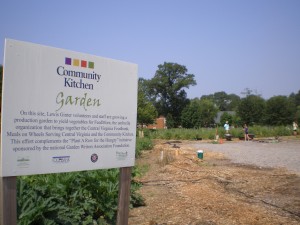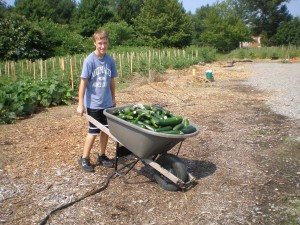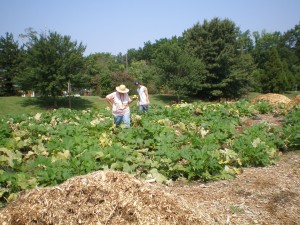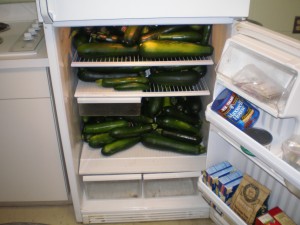Eat Your Veggies! And How.
by Jonah Holland, PR & Marketing Coordinator, Lewis Ginter Botanical Garden
Recently, NBC12’s Gene Cox reported on the Richmond Region’s “food deserts.” A food desert, Cox explains, is an area where there is no grocery store located within a mile in urban areas, or within 10 miles in rural areas. Cox reports, often when a grocery store is not nearby, people tend to substite what’s available, namely unhealthy “fast foods” or junk food from convenience stores and gas stations. They also might not know about where there food comes, or why plants are important to our health. Or, they may feel that they are too poor to afford fresh fruits and vegetables — which often times are expensive, especially if they are not grown locally. This is an issue that is very important to us at Lewis Ginter Botanical Garden, because we want people to know about where their food comes from and why plants are essential to our health.
If you read this blog on a regular basis, then it is no surprise to you that here at the Garden (with the help of our partners — HandsOn Greater Richmond, Carmax, FeedMore, The Central Virginia FoodBank and Meals on Wheels of Central Virginia) we have a goal of growing 10,000 lbs of fresh vegetables each season for the Community Kitchen, who in turn prepares meals for children in low-income areas and for the home-bound elderly and disabled. The Community Kitchen Garden uses mostly volunteer labor (see photos) as does the Community Kitchen. Often, even if people can get to the grocery store, the produce there is not fresh and it’s more expensive than other calorie-dense foods. With the Community Kitchen’s prepared meals, both children & the elderly get nutritious meals — that are filled with the veggies we grow, and already prepared for them. And since our garden is less than 5 miles from the kitchen, it doesn’t even have to travel far, and we don’t have to spend alot resources to transport it.
But there is another movement too that will help get local and fresh vegetables into diet of those who need them most. In the past few weeks, several of Richmond’s farmers markets starting accepting SNAP — or food stamps. The 17th Street Farmers Market downtown, the Byrd House Market near VCU in Oregon Hill, The South of the James Market off of Forest Hill, and The Lakeside Market, right here near the Garden all started accepting SNAP this summer. The way it works is that the SNAP customer decides how much money they want to spend at the market, their SNAP card is debited for that amount, and then they are given tokens to spend at the vendor of their choice. Channel 8 News, WRIC, explains in a story they did that when they studied the prices, for the most part, fruit and vegetables were a lot cheaper at the farmers markets too.
The food desert definition doesn’t take into account these farmers market — or SNAP. Also, it doesn’t take into account that many rural homesteads have their own farms or gardens. Regardless, it brings to light an important issue: Eat your veggies!



